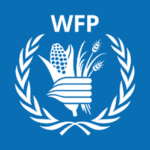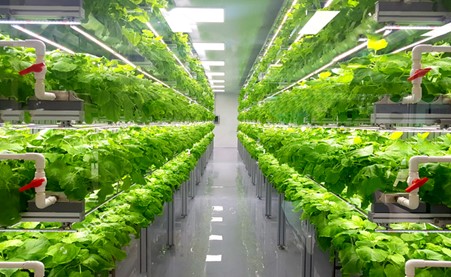Farming for the future
Food – and ensuring we have a reliable and plentiful supply of it – is becoming one of the prime concerns of government, and indeed, of anyone with an interest in the future of the planet and of our species. The concept of a sustainable form of agriculture, therefore; one that is able to meet demand without destroying itself in the process, is understandably attractive.
War, plague, and famine are three (of the four) ‘Horsemen of the Apocalypse’, yet we seemed to be on the way to banishing them, to the point in 2011, where intellectual, historian, professor of history and author, Yuval Harari, could declare: “There are no longer natural famines in the world; there are only political famines[1].”
Unfortunately, recent events in Ukraine and the COVID-19 pandemic combined to remind us that no supply chain is invincible. Ukraine and Russia account for 29% of global wheat exports and 62% of sunflower oil[2]. To put it another way, Ukraine’s food exports provide the calories to feed 400 million people[3].
 UN World Food Programme Director David Beasley told the UN Security Council in September 2022 the war in Ukraine is worsening an ‘unprecedented’ global emergency, with up to 345 million people in 82 countries ‘marching towards starvation.’ This is principally an issue for poorer countries, but no one can be complacent.
UN World Food Programme Director David Beasley told the UN Security Council in September 2022 the war in Ukraine is worsening an ‘unprecedented’ global emergency, with up to 345 million people in 82 countries ‘marching towards starvation.’ This is principally an issue for poorer countries, but no one can be complacent.
As it stands, Middle East and North African (MENA) countries import half of their food – and here in the Gulf Cooperation Council (GCC) states the figure reaches a staggering 90%[4].
An old problem…
The expectation is that this situation will get worse before it gets better. Partly through climate change, but mainly because of the world’s growing population.
By most estimates, the world population is projected to reach 9.7 billion people by 2050[5]. This implies that food production must increase by 70% to meet the demands of such a huge population. Now this is nothing new: all the way back in 1798 Thomas Malthus argued that the world’s population would eventually outgrow its resources because the human population increases geometrically, while food production increases arithmetically. His predictions were averted by a mixture of factors, including an increase in the amount of farmable land, such as the prairies of the American Midwest, industrialized farming techniques that boosted food production, and the development of artificial fertilizers. None of these will help now – every one of the tools that boosted food production has been found to be subject to the laws of unintended consequences.
Take fertilizer, for instance. Ammonium nitrate, NH3, is the basis for all artificial fertilizers. Without it, 30% to 50% of the world’s harvest would be lost.[6] It is made using the Haber-Bosch process for fixing nitrogen, developed in the early 20th Century by Fritz Haber, a German chemist, and Carl Bosch of BASF, a German chemicals firm.

In the short term, the use of fertilizer can boost crop yields and improve agricultural productivity. But in the longer term, it comes with a heavy, often unseen, cost. The nitrogen not absorbed by the plants acidifies the soil and it changes its chemical form, potentially dissolving in runoff as a nitrate ion and travelling through streams and rivers to the sea, or returning to the atmosphere as nitrous oxide, a greenhouse gas 300 times more damaging than carbon dioxide[7].
Another unexpected consequence of artificial fertilizer is a sharp fall in biodiversity. Some plants are better at using nitrogen than others and will outcompete other species. This can be seen in the dead zones now to be found where rivers that drain large agricultural basins flow out into the sea. Nitrogen and phosphorus in the runoff from farmlands enable some species of algae to bloom so much they use up all the oxygen in the water and everything – including the algae itself – then dies.

Over the second half of the 20th Century, such dead zones became ten times more common, as nitrogen flows into the sea from farming grew by about 50%.
Another cost is the reduced quality of the food that is produced. Conventional fertilizer-based farming does not nourish the soil with the essential minerals it needs to grow highly nutritious plants that are resilient. Instead, it produces crops that are highly susceptible to drought, diseases, and pests. In contrast, sustainable agriculture places a lot of emphasis on soil nourishment, which ultimately results in healthier plants and animals. Using natural fertilizers and crop rotation, while reducing the number of animals on a farm, sustainable agriculture ensures that soils are free from toxic compounds that may harm humans, animals, and pollinators. With healthy soils, plants can withstand attacks from pests and diseases because they have the required minerals to give them resilience[8].
Impact on biodiversity
One distinguishing feature of industrial-scale farming is its heavy reliance on energy-intensive machinery, especially fossil fuels, making it one of the major sources of greenhouse gas emissions. Naturally, sustainable agriculture does the opposite and tries to minimize energy use at all levels of production. It not only embraces less energy intensive tools of agricultural production, but also adopts smart farming systems. By eliminating the use of fossil fuels and reducing energy use, sustainable farming helps in reducing greenhouse gas emissions, thereby playing a significant role in combating climate change. According to a June 2021, report from the UN Environment Programme (UNEP), sustainable agriculture uses up to 56% less energy per unit of crop produced and emits 64% less greenhouse gas per hectare[9].

Monoculture, the system of farming that involves planting vast tracts of land with a single plant breed, is one of the defining characteristics of industrial agriculture. Over the past 100 years, more than 90% of crop varieties have disappeared and today, just nine plant species account for 66% of total crop production[10].

 The over-reliance on only one plant breed increases the vulnerability of plants to diseases, which may quickly spread from one plant to another and wipe out the entire crop. The European ‘potato famine’ of the 1840s – regarded as the world’s first agricultural catastrophe – illustrates how disastrous this can be.
The over-reliance on only one plant breed increases the vulnerability of plants to diseases, which may quickly spread from one plant to another and wipe out the entire crop. The European ‘potato famine’ of the 1840s – regarded as the world’s first agricultural catastrophe – illustrates how disastrous this can be.
Domesticated potatoes originate from Peru[11], where a typical smallholding might have as many as 73 varieties.
But in Europe, for efficiency, only three or four varieties were farmed, so when potato blight appeared it devastated the entire potato crop, because all the potatoes were genetically similar, if not identical. The most badly affected country was Ireland, where millions died and many more emigrated: its population today is still less than it was in the 1840s[12].
The cultivation of potatoes illustrates three of the key characteristics of conventional agriculture: genetically uniform crops; heavy fertilizer use; and pesticides. Pesticides were first used in the 19th Century to combat the swarms of Colorado potato beetle that swept the US. Allegedly, the whole industry began when an exasperated farmer threw a tin of paint at a swarm of these bugs, and they died. Now, because monocrops are highly vulnerable to pests and diseases, large industrial farms heavily depend on herbicides and pesticides to keep their plants healthy, without much consideration for other nearby flora or fauna that is also poisoned.
Unlike industrial agriculture, sustainable farming focuses on diverse farming systems which use a variety of crops. The diversity of plants in this farming system ensures they are more resilient to withstand any pests, diseases, and drought.
Conserving water supplies
The agricultural sector consumes about 69% of the planet’s fresh water[13], often to irrigate farmland under cultivation. Unlike conventional irrigation methods, sustainable agricultural systems use several techniques to conserve water, such as drip irrigation and mulching, contour farming and filter strips near rivers to limit contamination of the water mass, and favoring perennial crops with deep roots that do not require a lot of water.

For countries that struggle to meet the demand for food, the obvious answer has traditionally been to expand the amount of land under cultivation, but yet again, there are unforeseen costs, the emergence of zoonotic diseases such as COVID-19.
Clearing space for agriculture reduces the natural buffers that protect humans from viruses and other pathogens circulating among wildlife. And pathogens spread even more easily among flocks and herds that are genetically similar – which they all are – particularly when they are farmed intensively, closer to one another than they would naturally choose. So that takes in battery-farmed chickens, cattle in feeding lots, dairy cattle and any piggery, just for starters. Yet, between 2000, and 2010, large-scale commercial agriculture accounted for 40% of tropical deforestation; and local subsistence agriculture was not far behind, accounting for another 33%[14]. Loss of forests and unsustainable farming practices also lead to extreme erosion, so much so that, during the past 150 years, half of all agricultural topsoil has been lost[15].

A new solution
Generally, then, it is clear that conventional agriculture is environmentally damaging and not sustainable. More than that, is inherently insecure. Like any other industry, agriculture consolidates; larger units take over individual farms to benefit from the economies of scale and, because they are more efficient, they out-compete the smaller players and then absorb them. But relying on mega-farming corporations is risky – if one of them faces a problem, it could become an international issue.
Sustainable farming is one way of spreading the risk, as it tends to be highly decentralized and based around far smaller units, so there is less chance of endangering the supply chain.
All the drawbacks and risks associated with conventional agriculture come close to defining sustainable agriculture as what it is not, rather than what it is. According to UNEP, a useful working definition of sustainable farming is “farming that meets the needs of existing and future generations, while also ensuring profitability, environmental health and social and economic equity. It favors techniques that emulate nature – to preserve soil fertility, prevent water pollution and protect biodiversity”[16]. Yet the definition is fluid to some degree, often reflecting a cultural or commercial interest.
 Take, for example, the Brussels-based Sustainable Agriculture Initiative Platform. It has 170 members that are a Who’s Who of the international agriculture and food and drink sectors. Multi-national enterprises such as Carlsberg, Heineken, Cargill, and Dupont are there, as SAI Platform says: “From household names to small farm cooperatives, our members include everyone from small companies starting out on the journey towards sustainability to some of the world’s largest multinationals”.
Take, for example, the Brussels-based Sustainable Agriculture Initiative Platform. It has 170 members that are a Who’s Who of the international agriculture and food and drink sectors. Multi-national enterprises such as Carlsberg, Heineken, Cargill, and Dupont are there, as SAI Platform says: “From household names to small farm cooperatives, our members include everyone from small companies starting out on the journey towards sustainability to some of the world’s largest multinationals”.
This mixture of stakeholders with different priorities presents its own contradictions. One of its bodies is the European Roundtable for Beef Sustainability, whereas another organization pressing for sustainable agriculture, the World Wildlife Fund, regards beef farming as distinctly non-sustainable. It says: “The Food and Agriculture Organization of the United Nations (FAO) contends that the livestock sector alone is responsible for 18% of all greenhouse gas production”[17].
Nevertheless, the SAI Platform is committed to “growing a sustainable, healthy and resilient agricultural sector while creating strong and secure supply chains”[18]. We simply have to accept that sustainable agriculture is not a “one size fits all” concept but has to be tailored to different circumstances.
Making progress
Those circumstances are rarely as extreme as those found in the technologically advanced city-state that is Singapore, where less than 1% of its 720 square-kilometer land mass is set aside for farms and more than 90% of its food is imported[19]. It aims to change that. In 2019, the government said the country should produce 30% of its food by 2030, backing that with funds – S$ 207m (US$ 149m) – to boost productivity and spur research and inviting sustainable urban farmers to apply to rent the roofs of nine government-owned car parks. As befits an economy such as Singapore’s, the farming uses technology to help manage variables such as temperature, humidity, carbon dioxide, light, water and nutrients to produce tastier, sustainably produced crops such as lettuce, sorrel and chard.
This approach seems likely to work in the Middle East, where the Kuwait-based NOX Management set up a commercial indoor vertical farm in partnership with Hamburg-based agritech specialist &ever, now Growy, just outside Kuwait City, to produce salad vegetables. Spanning 3000m2, the farm uses IoT – the internet of things – sensors to digitally control seeding, germination, harvesting, temperature, humidity, emissions and air flow, using 90% less water and 60% less fertilizer than traditional farming.[20]

Countries such as India are also very interested in the possibilities of marrying technology to farming to boost production, without damaging the environment and exhausting natural resources. The agritech venture capital firm Omnivore[21], for example, has financed start-ups that offer financial technology services, business-to-business marketplace platforms, and post-harvest technologies to increase efficiency and sustainability. Fasal[22] is one of these, an agritech company that supplies the precision agricultural equipment required by micro-irrigation systems. It has installed soil moisture sensors across more than 16,000 ha of farmland in India to conserve water using artificial intelligence and IoT. Users report savings of up to 40% in water alone and greater success in treating crop diseases. [23]
While acceptance of the need for sustainable farming has grown, another more radical alternative has also attracted some heavyweight attention. In June 2021, UNEP and partners launched the Transformative Partnership Platform on agroecology or regenerative agriculture[24]. This has two aims: ensuring food and nutritional security; and reversing the degradation that human actions have caused. UNEP believes that agroecology is instrumental for realizing 12 of the 17 UN Sustainable Development Goals and, because it requires fewer external inputs and shortens value chains, it will empower farmers and local communities.
The concept has significant backing. In 2021, the food and beverage giant Nestlé launched a regenerative agriculture plan to invest US$ 1.3 billion over five years to help 500,000 farmers and 50,000 suppliers around the world improve soil organic matter and fertility[25].
Agriculture accounts for nearly two-thirds of Nestlé’s total greenhouse gas emissions, with dairy and livestock making up about half of that. In dairy, for example, Nestlé is assessing cutting-edge science and technology to reduce emissions at farm level. The company will start working with 30 reference dairy farms in 12 countries to test scalable, climate-friendly and regenerative agricultural practices that help achieve net zero greenhouse gas emissions. Nestlé is also working with farmers to select and cultivate pulse varieties to be used as milk alternatives.
Closer to home, I’m immensely proud that the Abdul Latif Jameel Water & Food Systems Lab (J-WAFS), co-founded in 2014 by Community Jameel and the Massachusetts Institute of Technology, is helping to support breakthrough food-tech research in the quest to feed the planet in a more sustainable way.
I’m also delighted that the Jameel Investment Management Company (JIMCO), through its Strategic Asset Fund, is helping to support foodtech and sustainable farming programs across the globe, while the JIMCO Technology Fund supports alternative technologies in adjacent markets, like its investment in biotech start-up VitroLabs Inc., which produces cell cultured slaughter-free leather.
This is all very laudable, but is it enough? There are signs that plans to boost food production safely are happening too slowly, that there is a widening divide between the haves and the have-nots, all made worse by the climate change that non-sustainable farming practices contribute towards. The number of people affected by hunger globally rose to as many as 828 million in 2021[26], an increase of about 46 million since 2020.
Yet, we cannot let the size of the mountain deflect us from our efforts to reach the summit. Humankind bears the brunt of responsibility for much of the climate crisis threatening our planet. It is up to humankind to find a solution, too, no matter how hard that may be. Small steps of progress are infinitely better than no steps at all.
[1] Homo Deus, Yuval Noah Harari, 2011.
[2] https://www.worldbank.org/en/news/video/2022/04/05/the-impact-of-the-war-in-ukraine-on-food-security-world-bank-expert-answers
[3] https://www.economist.com/leaders/2022/05/19/the-coming-food-catastrophe
[4] https://www.economist.com/leaders/2022/05/19/the-coming-food-catastrophe
[5] https://www.un.org/en/global-issues/population
[6] https://www.economist.com/christmas-specials/2022/12/20/deadly-dirty-indispensable-the-nitrogen-industry-has-changed-the-world
[7] https://www.epa.gov/ghgemissions/overview-greenhouse-gases
[8] https://www.linkedin.com/pulse/8-reasons-why-sustainable-agriculture-important-rebekah-shields/
[9] https://www.unep.org/news-and-stories/story/beginners-guide-sustainable-farming
[10] https://www.unep.org/news-and-stories/story/rethinking-food-systems
[11] The Food Programme 17:30-22.18. https://www.bbc.co.uk/sounds/play/b08n20k3
[12] https://www.cso.ie/en/csolatestnews/pressreleases/2021pressreleases/pressstatementpopulationandmigrationestimatesapril2021/
[13]https://www.bbc.co.uk/sounds/play/b08n20k3
[14] https://www.unep.org/news-and-stories/story/rethinking-food-systems
[15] https://www.worldwildlife.org/industries/sustainable-agriculture
[16] https://www.unep.org/news-and-stories/story/beginners-guide-sustainable-farming
[17] https://www.worldwildlife.org/industries/sustainable-agriculture
[19] https://www.economist.com/asia/2020/07/04/singapore-looks-to-the-skies-for-fields
[20] https://www.prnewswire.co.uk/news-releases/nox-management-realizes-a-significant-profit-after-the-acquisition-of-amp-ever-in-a-deal-worth-euro-130-million-870911616.html
[21] https://www.omnivore.vc/impact-2/
[22] https://fasal.co/about.html
[23] https://fasal.co/case-studies.html
[24] https://glfx.globallandscapesforum.org/topics/21467/page/TPP-home
[25] https://www.nestle.com/media/pressreleases/allpressreleases/support-transition-regenerative-food-system
[26] https://www.who.int/news/item/06-07-2022-un-report–global-hunger-numbers-rose-to-as-many-as-828-million-in-2021
Hero image illustration by Graeme Mackay





 1x
1x


 Added to press kit
Added to press kit


